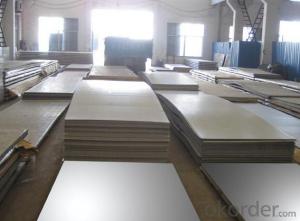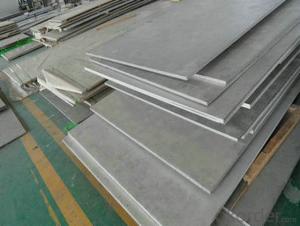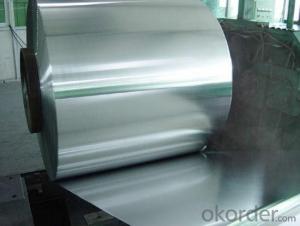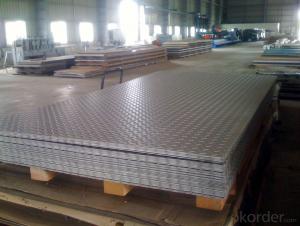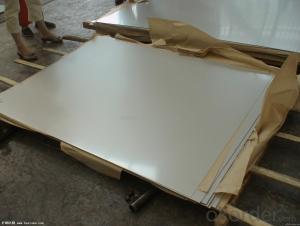Stainless Steel plate and sheet 409L with plenty stock
- Loading Port:
- Shanghai
- Payment Terms:
- TT OR LC
- Min Order Qty:
- 500 m.t.
- Supply Capability:
- 5000000 m.t./month
OKorder Service Pledge
OKorder Financial Service
You Might Also Like
Hot sale stainless steel sheet 201/202/304/304l/316/316l/430
Description of Stainless Steel Sheet:
Description | steel sheet,hot rolled steel sheet,cold rolled steel sheet, steel sheet,sheet,steel plate |
Standard | ASME, ASTM, EN ,BS,GB,DIN, JIS etc |
Application | Steel sheet applies to construction field, ships building industry, petroleum & chemical industries, war and electricity industries, food processing and medical industry, boiler heat exchanger, machinery and hardware fields. |
Packaging | Standard export sea-worthy packing |
Delivery time | 10-30 days |
Quality | No.1 |
Productivity | 500 tons/Day |
Note | Our company has cooperative relation between the domestic agents. Stainless steel sheet can be made accordingto the customers requirements. Fasten delivery. Quality assured. |
Contacts | If you have any question,please feel free contact me. |
Stainless steel sheet surface finish characteristics
Surface finish | Characteristics and application |
2B | The surface brightness and flatness of no2B is better than no2D. then through a special surface treatment to improve its mechanical properties,No2B could nearly satisfy comprehensive uses. |
No.1 | Polished with abrasive belt of grit#100-#200, have better brightness with discontinuous coarse stria, used as inner and external ornaments for building, electrical appliances and kitchen utensils etc. |
No.4 | Polished with abrasive belt of grit #150-#180,have better brightness with discontinuous coarse stria, but thinner than No3, are used as bathtub buildings inner and external ornaments electrical appliances kitchen utensils and food processing equipment etc. |
HL | Polished with abrasive belt of grit #150-#320 on the NO.4 finish and has continuous streaks, mainly used as buildings ornaments elevators, door of building, frontal plate etc. |
BA | Cold rolled, bright annealed and skin-passed, the product have excellent brightness and good reflexivity like mirror, kitchen apparatus, ornament etc. |
8K | The product have excellent brightness and prefer reflexivity can to be the mirror. |
Main Features of stainless steel sheet :
•Escalator, Elevator, Doors
•Furniture
•Production tools, Kitchen appliances, freezers, cold rooms
•Auto Parts
•Machinery and Packaging
•Equipment and Medical devices
•Transport system
Product Details:
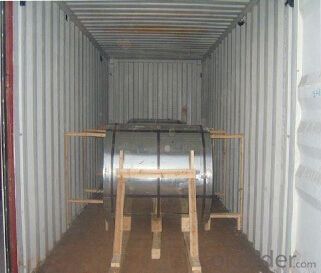
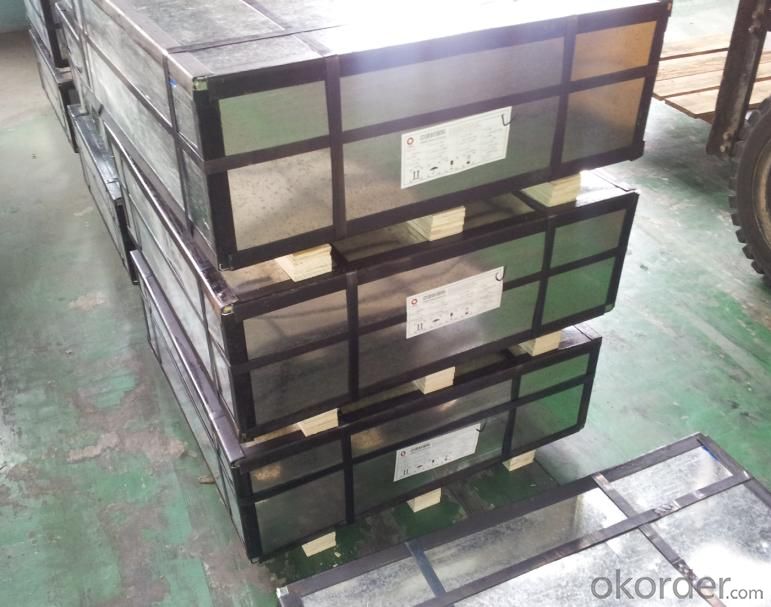
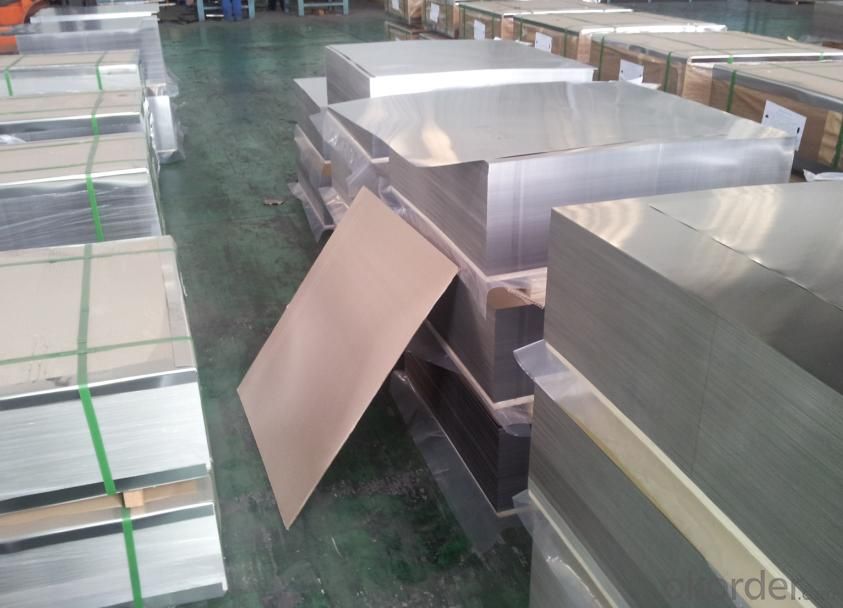
Sandard Seaworth Packing(wooden packing with water proof paper)
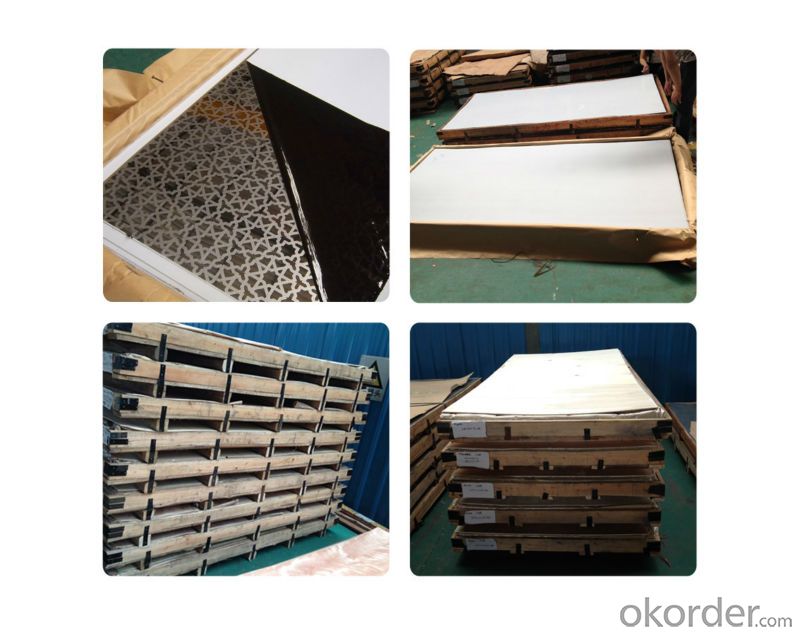
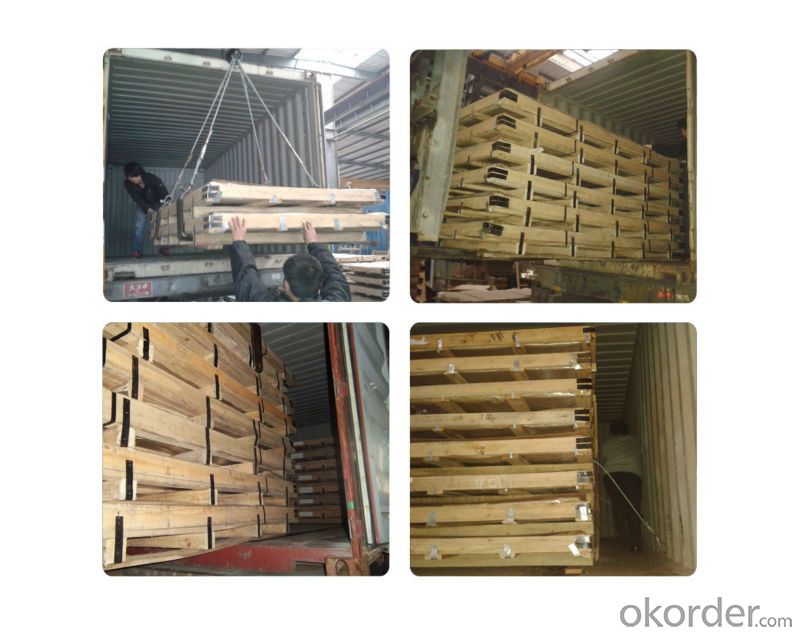
FAQ:
1. What's the quality?
very fine
2. How long get reply?
within 24 hours
If you have any question about stainless steel sheets,donot forget to sending the email to Us! You will get the competitive Price and have a very good experience about the Buying Process! CNBM International Corporation is always your trustful friend!
- Q:What are the different types of stainless steel sheet surface coatings available?
- Different types of surface coatings are available for stainless steel sheets, each providing unique properties and advantages. Some of the most common types are: 1. Natural Finish: Stainless steel sheets without any coating have a smooth and natural surface. This type is commonly used when corrosion resistance is essential. 2. Brushed Coating: This coating creates a distinctive brushed pattern on the stainless steel surface. It adds a decorative touch while also concealing scratches and fingerprints. 3. Mirror Coating: A mirror finish coating gives stainless steel sheets a highly reflective surface, similar to a mirror. This type is popular in architectural and decorative applications. 4. Satin Coating: Satin coatings offer a smooth and matte appearance with low reflectivity. They are often used in high-end appliances and architectural elements. 5. Bead Blasted Coating: This coating creates a uniform and textured surface by bombarding the stainless steel with small glass beads. It provides a unique visual effect and can hide surface imperfections. 6. Patterned Coating: Patterned coatings involve embossing or etching designs onto the stainless steel surface. They can create various patterns and textures, enhancing the aesthetic appeal in different applications. 7. Colored Coatings: Stainless steel sheets can be coated with different colors using processes like powder coating or electroplating. This allows for customization and adds a decorative element to the material. When choosing a surface coating for stainless steel sheets, it is important to consider the specific requirements of your application. Factors such as corrosion resistance, durability, aesthetics, and functionality should all be taken into account to ensure the best choice for your needs.
- Q:How do you determine the weight of a stainless steel sheet?
- To determine the weight of a stainless steel sheet, one must take into account its dimensions, thickness, and density. The first step involves using a measuring tool, such as a ruler or caliper, to measure the length, width, and thickness of the sheet. It is crucial to ensure that all measurements are taken in the same unit of measurement, such as inches or millimeters, for accuracy. Next, the density of stainless steel needs to be determined. Typically, stainless steel has a density of approximately 7.9 grams per cubic centimeter (g/cm³) or 7900 kilograms per cubic meter (kg/m³). However, it is important to note that this value may slightly vary depending on the specific grade or alloy of stainless steel being used. Once the dimensions and density are known, the weight can be calculated using the formula: weight = volume × density. To find the volume, one should multiply the length, width, and thickness of the sheet. For instance, if a stainless steel sheet measures 1 meter by 1 meter and has a thickness of 2 millimeters, the volume would be 0.001 cubic meters (1m x 1m x 0.002m). By utilizing the density of stainless steel (7900 kg/m³), one can then determine the weight by multiplying the volume by the density. In the given example, the weight of the stainless steel sheet would amount to 7.9 kilograms (0.001m³ x 7900 kg/m³). It is essential to bear in mind that this calculation provides an approximate weight, assuming a consistent thickness throughout the entire sheet. Furthermore, variations in composition or manufacturing processes may result in slight deviations in the density of the stainless steel, thereby affecting the accuracy of the weight calculation.
- Q:What are the different types of edges available for stainless steel sheets?
- Stainless steel sheets can have a variety of edge types, including mill edges, slit edges, deburred edges, sheared edges, and rounded edges.
- Q:What is the thermal expansion rate of stainless steel sheets?
- The thermal expansion rate of stainless steel sheets can vary depending on the specific grade and composition of the stainless steel, but generally, it ranges from about 10-17 parts per million per degree Celsius (ppm/°C).
- Q:What are the common manufacturing standards for stainless steel sheets?
- There are several common manufacturing standards for stainless steel sheets that ensure their quality and consistency. One of the most widely recognized standards is the ASTM International (formerly known as the American Society for Testing and Materials) standard. ASTM A240 is the specific standard for stainless steel sheets, which specifies the requirements for chemical composition, mechanical properties, and other relevant characteristics of the material. Another important manufacturing standard is the EN (European Norm) standard, specifically EN 10088, which provides guidelines for stainless steel flat products, including sheets. This standard covers various aspects such as dimensions, tolerances, surface finishes, and more. Additionally, there are national standards developed by different countries. For example, in Japan, the Japanese Industrial Standards (JIS) classify stainless steel sheets under various specifications such as JIS G4304 and JIS G4305. These standards define the requirements for chemical composition, mechanical properties, and surface finishes of stainless steel sheets. In the United States, the American Iron and Steel Institute (AISI) also sets standards for stainless steel sheets. The AISI 300 and 400 series are commonly used in the manufacturing of stainless steel sheets, and their properties are defined by the AISI. It is important for manufacturers and suppliers to adhere to these standards to ensure that the stainless steel sheets meet the desired quality requirements and can be used reliably in various applications. These standards help maintain consistency, compatibility, and traceability in the production and use of stainless steel sheets across different industries.
- Q:Is there any magnetism in 304 stainless steel?
- This doesn't mean it is not qualified, because the most commonly used stainless steel decorative tube plate is Austenitic 304 material is generally non-magnetic or weakly magnetic, but fluctuations in chemical composition caused by smelting or processing of different magnetic properties may also appear, so it can not be considered to be counterfeit or substandard.
- Q:What does 8K stainless steel mean?
- The stainless steel mirror panel is polished by polishing the surface of BA, 2B or No.1 on an initial surface like a mirror surface (8K, mirror or No.8).
- Q:Can stainless steel sheets be used for electrical applications?
- Yes, stainless steel sheets can be used for electrical applications. Stainless steel is an alloy that contains chromium, which makes it highly resistant to corrosion and oxidation. This corrosion resistance is beneficial for electrical applications where the material may be exposed to moisture or harsh environments. Stainless steel sheets can be used in various electrical components such as electrical enclosures, control panels, junction boxes, and electrical connectors. The high strength and durability of stainless steel make it suitable for these applications, providing a reliable and long-lasting solution. Additionally, stainless steel's non-magnetic properties can be advantageous in certain electrical applications where magnetic interference needs to be minimized.
- Q:How do I calculate the strength of stainless steel sheets?
- To calculate the strength of stainless steel sheets, you need to consider several factors such as the material's tensile strength, yield strength, and elongation. Tensile strength refers to the maximum amount of stress a material can withstand before breaking. It is usually measured in pounds per square inch (psi) or megapascals (MPa). To determine the tensile strength of stainless steel sheets, you can refer to the material's specification sheet provided by the manufacturer or consult engineering handbooks. Yield strength, on the other hand, represents the stress at which a material begins to deform permanently. It is an important parameter to consider when designing structures or selecting materials. The yield strength of stainless steel sheets can also be found in the material's specification sheet or engineering references. Elongation, commonly expressed as a percentage, indicates the extent to which a material can stretch or deform before breaking. Higher elongation values suggest greater ductility. The elongation of stainless steel sheets can be determined through tensile testing or obtained from material specifications. These three parameters - tensile strength, yield strength, and elongation - provide insight into the overall strength and performance of stainless steel sheets. It is essential to consider these factors when evaluating the suitability of stainless steel sheets for specific applications or designing structures that require a particular strength level.
- Q:What is the modulus of elasticity of stainless steel sheets?
- The stiffness or rigidity of a material can be determined by its modulus of elasticity, which is commonly referred to as Young's modulus. In the case of stainless steel sheets, the modulus of elasticity usually falls within the range of 190 to 200 gigapascals (GPa). Nevertheless, it is crucial to acknowledge that the modulus of elasticity is subject to variation based on factors like the precise type and grade of stainless steel, as well as temperature and strain rate.
1. Manufacturer Overview |
|
|---|---|
| Location | |
| Year Established | |
| Annual Output Value | |
| Main Markets | |
| Company Certifications | |
2. Manufacturer Certificates |
|
|---|---|
| a) Certification Name | |
| Range | |
| Reference | |
| Validity Period | |
3. Manufacturer Capability |
|
|---|---|
| a)Trade Capacity | |
| Nearest Port | |
| Export Percentage | |
| No.of Employees in Trade Department | |
| Language Spoken: | |
| b)Factory Information | |
| Factory Size: | |
| No. of Production Lines | |
| Contract Manufacturing | |
| Product Price Range | |
Send your message to us
Stainless Steel plate and sheet 409L with plenty stock
- Loading Port:
- Shanghai
- Payment Terms:
- TT OR LC
- Min Order Qty:
- 500 m.t.
- Supply Capability:
- 5000000 m.t./month
OKorder Service Pledge
OKorder Financial Service
Similar products
New products
Hot products
Hot Searches
Related keywords
